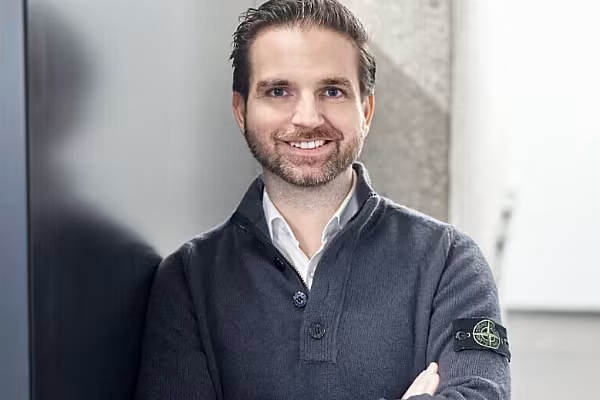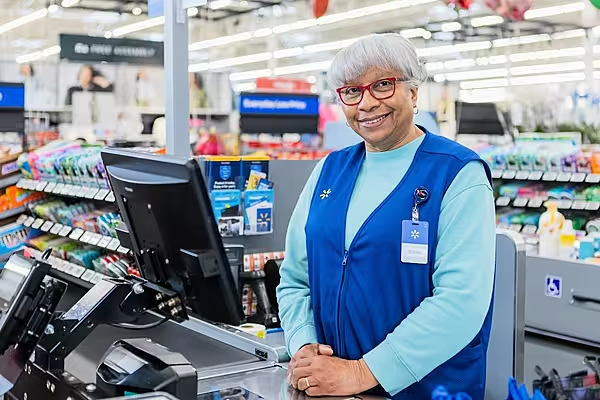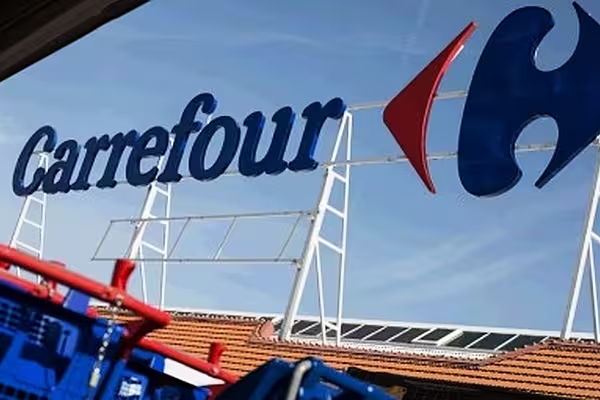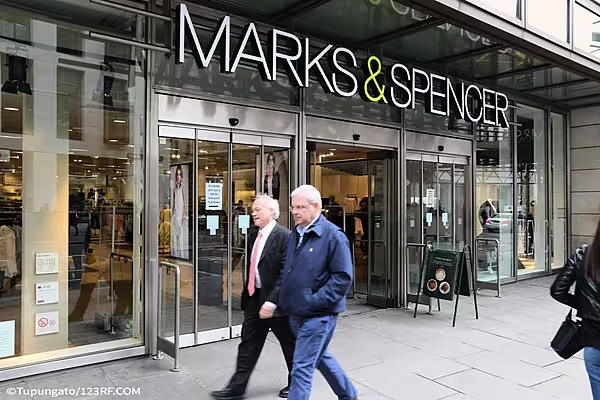The past four years have seen many differing trends in the supermarket environment, with technology advancements, supply chain uncertainty, and different consumer expectations all playing a role.
Some of these trends were transitory, while other trends are very much a new reality for the modern supermarket landscape.
One shift that is here to stay is the increasing prevalence of quick commerce, a type of e-commerce with an emphasis on speed, with goods typically expected to be delivered within an hour.
foodora is at the forefront of this movement. Under the leadership of Herbert Haas, chief international officer, the company is focusing on affordability and a strong partner network, to ensure that it provides the best customer experience to its users.
In this interview with ESM, Haas gives an insight into foodora’s strategy in Europe, and why local and data-driven knowledge is key to success in a cross-regional market.
Please tell us about the ethos of foodora and how it came about.
We want to provide customers with an amazing experience. We want to give them the best, optimal choice and provide them with affordability.
We started as a food delivery company and have had very strong growth in the quick-commerce space as well. To really deliver on that, the key part for us is to understand that this is much more than foodora and customers – it is an ecosystem.
It is an ecosystem that obviously includes our couriers and our partners on the food side, but also our partners on the retail side. It obviously includes other partners, such as payment providers like Klarna or Trustly.
If we don’t succeed in making this ecosystem successful and empowering for all of those people who are in that triangle or a quadrangle – however you want to shape it – then it’s not going to work, and, in the end, we cannot deliver to our end consumers what we want and need to deliver for them.
One thing that the whole industry learned, coming out of the pandemic versus going into the pandemic, is that consumers have much more specific needs and upgraded expectations. To really cater to those needs, you must have a very strong ecosystem, and a very strong ecosystem that is seeing a benefit from working not only in the q-commerce space, but in the delivery space overall.
How has quick commerce changed the retail landscape, and what will the effect be on traditional retailers?
When you look at the relatively short but still multiple-year history of quick commerce, you see phases, and you see phases, also, of how people talk about quick commerce.
In the beginning, it was, ‘Quick commerce is the new e-commerce, and everything will be delivered in 30 minutes now.’ It is similar to when people started talking about e-commerce, and they always overestimated how fast it would grow, compared to bricks and mortar, but they underestimated the overall change it would have over the long term.
I think it is similar for quick commerce, in that now we are much more in an environment where it has become very clear that quick commerce has its right to exist. I think it’s very clear that there are people who really appreciate having everything in 30 minutes all the time, but most people are much more interested in having more choices. There are occasions where I need things in 30 minutes, there are occasions where I shop on regular e-commerce [platforms], and there are occasions where I go to a bricks-and-mortar store.
What I think quick commerce needs to do is really fill the void of having something really quick when you need it and making sure that we give consumers the time back they don’t want to spend in bricks-and-mortar retail.
Speaking for myself, there are shopping trips that are very enjoyable because I need to consult with the seller or look at various products. There are other occasions where I already know what I want and I need it now.
I think the evolution of quick commerce has developed where it’s an occasion game, versus ‘one person is a quick-commerce shopper, and one person is not.’
It enriches the retail landscape. My family operated an electronics retail store. I grew up in retail, and, at the time, it was bricks and mortar and nothing else. What happens with e-commerce, but also quick commerce, is that retailers have the opportunity to capture more occasions for their existing customers.
At the same time, they have the opportunity – through platforms like ours and through companies like foodora – to find new customers that probably don’t even shop with that bricks-and-mortar retailer in the first place. I really think there are multiple upsides to having quick commerce as part of your omnichannel strategy.
What is foodora’s expansion strategy?
There are multiple ways to think about expansion. If you think about geographic expansion, we are very happy with the six markets we are operating in right now, such as Finland, Norway, Sweden, Czechia, Hungary and Austria.
We really want to focus on those markets and make sure that we further push on the points that I mentioned in the beginning. We need the best customer experience, we need the best choice for our consumers, and we need to have the best affordability.
When I look at those markets, there is a tonne of room for expansion. There are additional partners we can work with, when you think about choice, but even when you go to micro-choice within our partners, do we have the full assortment? Do we have the right assortment on our platform?
So, that’s part of our expansion. There are obviously new verticals, when you think about it. Quick commerce right now, obviously, has a very strong focus on groceries. Are there other verticals to go into?
In Austria, we have a quite significant business with pharmacies, where people can order their medication through the platform, which is amazing because, in a lot of cases, when you are sick, you can’t really leave your house.
So, there are multiple-use cases. While we are very focused on the six markets we operate in, that does not mean we are not expanding. I think there are a tonne of expansion opportunities within those markets.
What do you think will be the main challenges with the strategy?
I think the challenges with that strategy are somewhat similar to the challenges with pretty much every strategy. It’s about focusing on the things that you really want to focus on.
I think quick commerce is a very good example of that. You could do a hundred things at the same time, but really focusing on the things that we feel drive the most customer value and give consumers time back is the most important. It is about really focusing on the customer experience part, really focusing on the choice part, really focusing on the affordability part.
I can give you one example for that, when I say focus. When we think about strategic partnerships – not a retail partner, but a strategic partner – it always needs to have a positive impact on one of the groups in our ecosystem.
If the strategic partnership is only a monetary partnership, then it’s not going to really drive strategic value. That’s what I mean with focus – we could do many more things all at the same time, but you will probably lose track of what your actual strategy is. For me, the biggest risk to the strategy is not focusing on the strategy enough.
You mentioned that partnerships with other major companies will be a big part of foodora’s expansion strategy, and it is not all about finance, but positive impact. Please tell us more about this.
For example, talking about the Trustly partnership, the key part of that is – number one – we are giving our consumers an additional way to pay on our platform, but the second part is, we give our retailers the opportunity to generate more sales through accepting a new payment method.
When you think about Spotify with our foodora PRO programme, which is a core pillar of our affordability strategy, you have a subscription, and then you – number one – get deals, but – number two – you have free or heavily discounted delivery.
The core pillar of our affordability strategy is that when we looked at what partners we could partner up with, Spotify was an immediate choice because, obviously, lots of consumers know Spotify, lots of consumers use Spotify, but we need to make sure that our customers get the benefit from that. So, they get a few months for free, they get a free trial, they get something out of it.
What will be the future of quick commerce, particularly when it comes to AI and other technologies?
When it comes to the future of quick commerce, there are various ways to look at it. Number one, I think the choice that consumers will have on quick-commerce platforms like foodora will expand tremendously. With all the technology advancements that are going on, the service offering will be much more tailored, going forward, and much more streamlined.
What I mean with that is, it will range from personalised recommendations on a platform to understanding what you ordered the last time you were on our platform. We might be able to see the product is out of stock in a certain instance and suggest another product. We realise from that conversation that if a certain product is missing in the future, we can replace it with another product.
In the future, there will be a lot of machine learning and AI understanding the consumer better and tailoring our offer better.
There is, obviously, another conversation around what will happen to the means of delivery, going forward. We could talk about drones, we could talk about robots, and all of those things. However, in the short term, there will be a lot of machine learning and AI that will actually streamline delivery operations even more, which will make it possible for consumers to get even more specific about when they will get the product.
We’ll get even more accurate forecasts that we can work with our partners on, and we can say, “On this day, we expect this demand from a planning perspective. Here are the patterns that we see. This is what’s happening to your stock in the store.”
If you ask me, I think technology will have an impact in 50 small areas before it will have an impact on one big one, such as everything getting delivered by drones.
What has surprised you the most about the foodora journey so far, and what is something that is not immediately obvious to consumers when it comes to quick commerce?
Consumers tend to underestimate the quality of fresh and ultra-fresh products online, specifically with quick commerce.
What we see is that the initial hurdle to start ordering is relatively high. Once that hurdle has been passed, consumers tend to stick. In the end, the quality is the same quality you find in the store, but the psychological hurdle is there.
What I have noticed on our journey is that working with local retailers, there is an evolution with thinking, especially when you talk about the people in the store. In the beginning, it was perceived, at least in some cases, as additional work or rather complex, and people wondered how to deal with it.
Over time, specifically with store managers, they begin to see incredible value, and there are situations where consumers come to a retail store and say, “I never shopped with you before, but I found you on foodora, I tried you online, but afterwards, I actually wanted to come and check out your store.”
For mom-and-pop stores, this is super interesting. It doesn’t happen so often for an Edeka in Sweden or Billa in Austria, but in smaller specialty stores. So, there are definitely stories that we hear where people say we are actually expanding their consumer groups.
Again, we’re talking about an initial hurdle, and once the processes become very clear and once in-store operations are figured out, there is an attitude of happiness for our retail partners, which I think is really great to see.
foodora wants a diverse ecosystem of local and global partners. How can this be achieved?
I think it goes back to one of the three core pillars that I talked about in the beginning, around choice. What is very important for us at foodora is that if you are a consumer, in most cases, you don’t say, “I only shop with global players,” or “I only shop with mom-and-pop stores.” What is super-critical for us is to provide consumers with the choice they want, need and deserve.
It is not about making consumers choose by saying, “Hey, if you want to shop on foodora, you either choose global brands or you only buy from mom-and-pop stores.” I think both of those groups actually need each other and need to go together for a platform to provide the choice that consumers need and want. So, that is one aspect that definitely informs our thinking around the big juggernauts.
However, you also need a very broad choice, to make sure consumers actually find what they are looking for. Locally sourced products need to be found on the platform. In some cases, this is tackled through bigger retailers – sometimes it’s specialty stores, sometimes it’s through our own foodora markets.
This is not a one-player-takes-it-all approach. We are basically the high street in your pocket and give consumers the opportunity to pick between the stores they want to shop from.














